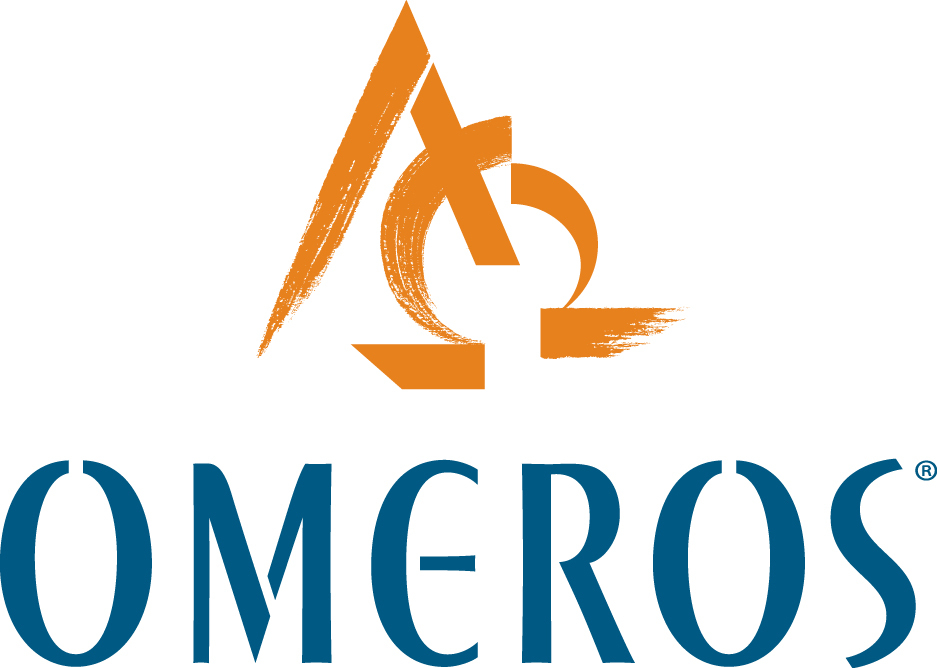-- Targeted Complement Activating Therapy™ Represents Next-Generation, Broadly Applicable Antimicrobial Therapeutics –
SEATTLE--(BUSINESS WIRE)--Omeros Corporation (Nasdaq: OMER) today announced that the first public presentation of its proprietary Targeted Complement Activating TherapyTM (T-CATTM) platform will occur at the European Congress on Infectious Diseases 2025 in Rome, Italy on Monday, April 14. The plenum presentation, titled Augmenting cytotoxicity of pathogen-specific antibodies which initiate complement activation independent of the classical pathway, will be delivered by Prof. Wilhelm Schwaeble, Ph.D., D.Sc., Director of Research DVM at the University of Cambridge and Director of the Omeros-Cambridge Center for Complement and Inflammation Research.
Omeros’ T-CAT platform presents a novel class of pathogen-targeting recombinant antibodies designed for broad applicability against diverse microbial species, including multidrug-resistant organisms (MDROs), without promoting or enhancing the development of drug resistance. The global rise of MDROs – microorganisms, predominantly bacteria, that are resistant to one or more classes of antimicrobial agents – has massive clinical and economic implications. More than 2.8 million antimicrobial-resistant infections occur in the U.S. each year, and more than 35,000 people die as a result.
The mechanism of action of T-CAT recombinant monoclonal antibodies is unique. The heavy chains of each T-CAT antibody construct are engineered to contain an active complement-cleaving enzyme to trigger direct activation of complement on the microbial cell surface, leading to microbial destruction and clearance. Each engineered T-CAT construct is targeted, binding to surface antigens that are highly conserved across multiple microbial serogroups and essential for the targeted microbe’s survival, making each different T-CAT antibody construct lethal for a given microbial species while avoiding significant “off-target” effects. In well-established in vivo animal models considered predictive of efficacy in humans, T-CAT recombinant antibodies clearly demonstrated effectiveness in treating life-threatening infections caused by Gram-negative and Gram-positive bacterial pathogens, specifically Klebsiella pneumoniae, Pseudomonas aeruginosa, Streptococcus pneumoniae and Neisseria meningitidis, three of which have been designated by the World Health Organization as priority bacterial pathogens. Each T-CAT recombinant antibody demonstrated marked clearance of bacteria from blood and lung tissues, resulting in significant reduction of organism-mediated and inflammatory pulmonary injury as well as significantly increased survival compared to animals receiving the corresponding parent conventional antibody.
“T-CAT technology constitutes a new groundbreaking weapon for combatting multidrug-resistant organisms by activating complement directly on the cell surface of microbial pathogens,” stated Thomas J. Walsh, MD, PhD, Founding Director of the Center for Innovative Therapeutics and Diagnostics (https://citdx.org/leadership/) and a distinguished physician-scientist who has helped to develop from laboratory to clinical trials 24 small molecule antimicrobial agents and immunomodulators. “The T-CAT animal studies support a long plasma half-life and show substantially greater than 99% reduction of organisms in both blood stream and lung tissue, as well as marked reduction in organism-mediated pulmonary injury. Based on the data, initial clinical approaches include frontline treatment of MDR Gram-negative sepsis and pneumonias. Also, in combination and acting synergistically with beta-lactam/beta-lactamase antibiotics, T-CAT antibodies could help preserve the use of beta-lactam/beta-lactamase agents in the fight against MDRO infections. We are now evaluating T-CAT antibodies in the treatment of lethal fungal diseases, and I expect that they could well become especially important in the expanding global burden of antifungal-resistant pathogens, including Candida auris and triazole-resistant Aspergillus fumigatus. The ability of the T-CAT technology to harness monoclonal antibodies engineered to deliver complement activation onto the cell surface of pathogens independent of the classical pathway creates a new and exciting paradigm of attack against the global pandemic of MDROs.”
The T-CAT technology is designed to overcome shortcomings of current small-molecule and conventional antibody antimicrobials. The misuse and widespread administration of broad-spectrum small-molecule antibiotics in clinical practice have accelerated the selection and spread of MDROs, further exacerbating the global antibiotic resistance crisis. The development of new small-molecule antibacterial agents has been followed by the rapid emergence of resistance within months of their introduction, greatly limiting their potential utility. The current lack of effective new small-molecule antibiotic classes has led to an increasing interest in conventional antibodies to treat microbial infections, yet outcomes of clinical trials have been similarly disappointing. Conventional pathogen-targeting antibodies require the initiation of complement activation via the classical pathway C1 complex, but pathogens have been selected by their ability to evade C1-mediated complement activation, preventing their complement-driven killing and elimination. In contrast, T-CAT recombinant antibodies can bypass the limitations of the classical pathway initiation complex C1 by initiating robust complement activation directly on the surface of the microbe. Unlike small-molecule antimicrobials, T-CAT antibodies are not subject to resistance. Instead, they are engineered to be effective over a wide range of bacteria, including MDR bacteria, as well as fungi, viruses, and parasites across immunocompetent and immunocompromised patients without promoting the development of drug resistance. Because of their enhanced pathogen-specific cytotoxicity, T-CAT antibody dosing frequency and duration are expected to be significantly reduced relative to those of conventional anti-infectives.
“The T-CAT data to date across multiple Gram-negative and Gram-positive bacterial species are impressive, with extremely high killing activity and no apparent side effects in animal studies,” said Gregory A. Demopulos, M.D., Omeros’ Chairman and CEO. “The rapidly expanding MDRO threat and growing MDRO-related death rates globally demand a new and effective therapeutic approach. The established mechanism of our proprietary T-CAT platform should overcome the life-threatening shortcomings of current antimicrobials – effective against MDROs in both immunocompetent and immunocompromised hosts without enhancing drug-resistance and broadly applicable to the full range of often-lethal bacteria, viruses, fungi, and parasites. Funding opportunities to combat the MDRO crisis are significant, and we look forward to securing resources to move our technology quickly into the clinic.”
In 2024, sales of anti-infectives were $46 billion in the U.S. and $135 billion globally. Over the next 25 years, more than 39 million people worldwide are estimated to die from MDR bacteria alone.
About Omeros Corporation
Omeros is an innovative biopharmaceutical company committed to discovering, developing and commercializing first-in-class small-molecule and protein therapeutics for large-market and orphan indications targeting immunologic disorders, including complement-mediated diseases and cancers, as well as addictive and compulsive disorders. Omeros’ lead MASP-2 inhibitor narsoplimab targets the lectin pathway of complement and is the subject of a biologics license application pending before FDA for the treatment of hematopoietic stem cell transplant-associated thrombotic microangiopathy. Omeros’ long-acting MASP-2 inhibitor OMS1029 has successfully completed Phase 1 single- and multiple-ascending dose clinical studies. Zaltenibart, Omeros’ inhibitor of MASP-3, the key activator of the alternative pathway of complement, is in Phase 3 clinical development for paroxysmal nocturnal hemoglobinuria and is being evaluated in an ongoing Phase 2 clinical trial for complement 3 glomerulopathy. Funded by the National Institute on Drug Abuse, Omeros’ lead phosphodiesterase 7 inhibitor OMS527 is in clinical development for the treatment of cocaine use disorder. Omeros also is advancing a broad portfolio of novel cellular and molecular immuno-oncology programs. For more information about Omeros and its programs, visit www.omeros.com.
Forward-Looking Statements
This press release contains forward-looking statements within the meaning of Section 27A of the Securities Act of 1933 and Section 21E of the Securities Exchange Act of 1934, which are subject to the “safe harbor” created by those sections for such statements. All statements other than statements of historical fact are forward-looking statements, which are often indicated by terms such as “aim,” “anticipate,” “believe,” “could,” “estimate,” “expect,” “goal,” “intend,” “likely,” “look forward to,” “may,” “objective,” “plan,” “potential,” “predict,” “project,” “should,” “slate,” “target,” “will,” “would” and similar expressions and variations thereof. Forward-looking statements, including statements regarding the anticipated therapeutic benefits or commercial prospects of Omeros’ therapeutic technologies or investigational agents, and statements regarding the availability of funding opportunities, are based on management’s beliefs and assumptions and on information available to management only as of the date of this press release. Omeros’ actual results could differ materially from those anticipated in these forward-looking statements for many reasons, including, without limitation, unfavorable results of preclinical or clinical development activities, unavailability of capital resources to support planned development activities, regulatory processes and oversight, challenges associated with conducting clinical trials, intellectual property claims, competitive developments, litigation, and the risks, uncertainties and other factors described under the heading “Risk Factors” in our Annual Report on Form 10-K filed with the Securities and Exchange Commission on March 31, 2025, and in our subsequently filed Quarterly Reports on Form 10-Q. Given these risks, uncertainties and other factors, you should not place undue reliance on these forward-looking statements, and we assume no obligation to update these forward-looking statements, whether as a result of new information, future events or otherwise, except as required by applicable law.
Contacts
Jennifer Cook Williams
Cook Williams Communications, Inc.
Investor and Media Relations
IR@omeros.com






